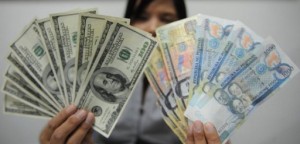Peso drops over WB forecast of slowing growth in East Asia, Pacific
MANILA, Philippines—The peso dropped on the first trading day of the week following the release of a World Bank report saying the region of East Asia and the Pacific may grow by a pace slower than earlier anticipated for this year given global economic challenges.
The local currency closed at 41.47 against the US dollar on Monday, down by 4 centavos from Friday’s finish of 41.43:$1.
Intraday high hit 41.45:$1, while intraday low settled at 41.515:$1.
Volume of trade amounted to $786.1 million from $604 million previously.
The World Bank said in the report that growth prospects of emerging markets from East Asia and the Pacific might be dampened by the economic problems confronting the eurozone and the United States, both of which have always been major export markets.
“Weaker demand for East Asia’s exports is slowing the regional economy, but compared to other parts of the world, it’s still growing strongly, and thriving domestic demand will enable the region’s economy to bounce back to 7.6 percent next year,” Pamela Cox, World Bank vice president for East Asia and the Pacific, said in a statement.
The World Bank estimates East Asia and the Pacific to grow by 7.2 percent this year, slower than the 8.2 percent in 2011.
Traders said views that the prolonged problems in advanced economies could dampen export and thus growth performance of emerging Asian countries adversely affected demand for emerging-market assets.
The decline of the peso was despite the fact that World Bank raised its growth forecast for the Philippines for this year from 4.6 to 5 percent.
The World Bank said strong domestic demand in the Philippines has been partially shielding the Philippines from the ill-effects of a weak global economy.
Traders said the appetite for peso-denominated securities was affected by sentiment for the region.

